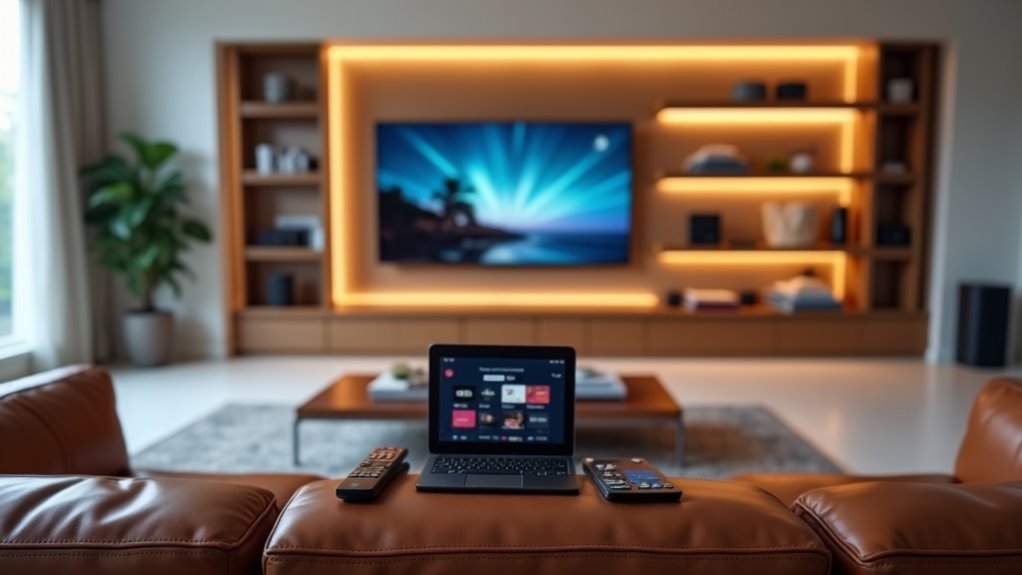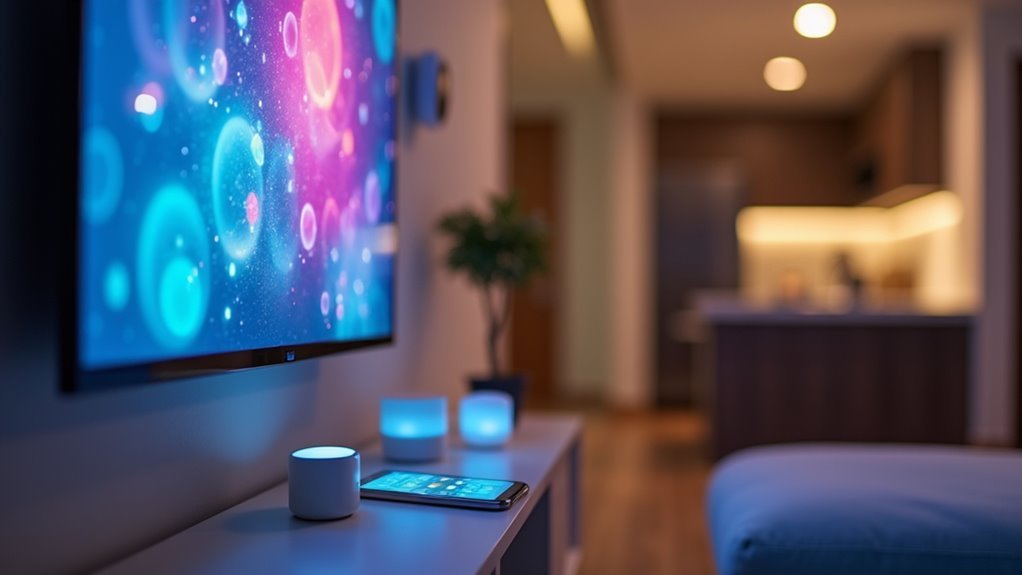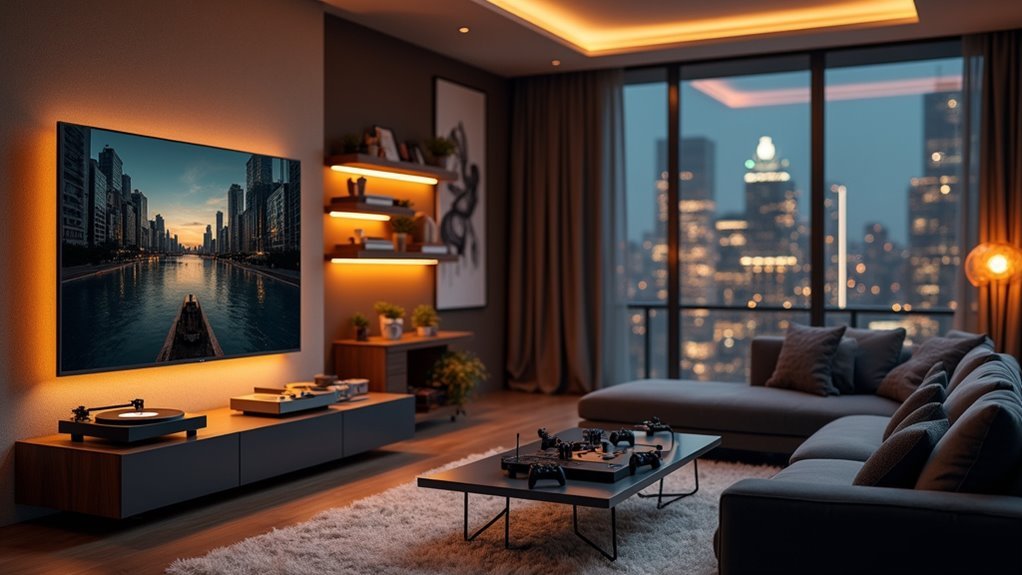You’ve invested in smart home technology, but your entertainment setup still feels disconnected and clunky. Programming custom scenes can transform how you experience movies, games, and music in your space. The right automation sequences won’t just dim your lights—they’ll synchronize your entire environment to match whatever you’re watching or playing. Three specific programming strategies will eliminate the hassle of manual adjustments and create the immersive atmosphere you didn’t know you were missing.
Essential Automation Controls and Device Integration

Anyone can transform their living room into a smart entertainment hub by choosing the right automation controls and ensuring seamless device integration.
Start by selecting an integrated control system like Amazon’s Alexa or Google Assistant for voice commands and unified app management. These platforms excel at coordinating your entire home entertainment setup through intuitive smart home apps.
For advanced functionality, consider specialist hubs like Savant, Creston, or Control4, which offer sophisticated theater control features.
Enhance traditional AV equipment using smart plugs and switches to enable remote scheduling and operation.
Focus on compatibility when selecting devices to streamline your setup process.
Program automated scenes that simultaneously dim smart lighting and adjust audio levels, creating an ideal viewing experience with minimal effort through seamless home automation.
Lighting and Audio Scene Customization
Once you’ve established your control foundation, smart lighting systems and audio customization becomes the key to creating truly immersive entertainment experiences.
Your home theater setup can transform dramatically with proper scene presets that respond to different activities.
- Smart lighting systems automatically adjust brightness and color temperatures for movie nights versus gaming sessions
- Audio scenes switch between background music and game audio with single button presses
- Automated routines trigger victory songs through your sound system after gaming wins
- Responsive lighting flickers or changes colors when your sports team scores, creating an immersive atmosphere
- Voice activation through Google Assistant enables seamless shifts between entertainment modes
These customizations elevate your entertainment experience beyond basic functionality, creating personalized environments that adapt to your activities.
Smart Environment and Safety Programming

While entertainment customization enhances your viewing experience, integrating smart safety and environmental controls guarantees your home theater remains secure and efficient.
Install smart carbon monoxide and smoke detectors that send smartphone alerts, ensuring continuous safety monitoring during your audio-visual experience. Security cameras seamlessly integrate into your home entertainment setup, letting you monitor your space remotely through apps.
Program lighting automation to flicker during exciting moments, like team scores, while maintaining illuminated safety pathways. Smart plugs and switches manage energy consumption in your entertainment area, automatically controlling devices when they’re not in use. This smart environment approach promotes both safety and efficiency.
Don’t forget regular firmware updates for your devices—they enhance security and protect your home entertainment system from potential vulnerabilities.
Frequently Asked Questions
What TV Size Works Best for My Room Dimensions?
You’ll want to measure your viewing distance first. For ideal viewing, choose a TV that’s roughly one-third the distance you’ll sit from it. Larger rooms accommodate bigger screens comfortably.
How Should I Arrange Furniture for Optimal Viewing Angles?
You should position your main seating directly facing the screen at eye level. Place chairs and sofas in a slight arc, ensuring everyone’s within a 30-degree viewing angle for comfort.
What’s the Ideal Distance Between Seating and the TV Screen?
You’ll want to sit roughly 1.5 to 2.5 times your TV’s diagonal screen size away. For a 65-inch TV, that’s about 8-14 feet. Closer feels immersive but can strain your eyes.
How Can I Hide or Organize Entertainment System Cables Effectively?
You can route cables through wall-mounted conduits, use cable sleeves to bundle wires together, install cord covers along baseboards, or place everything inside a media console with built-in cable management compartments.
Which Sound System Setup Provides the Best Audio Experience?
You’ll get the best audio experience with a 5.1 or 7.1 surround sound system featuring quality speakers, a dedicated subwoofer, and proper room placement. Consider your space size and acoustic properties when choosing.





Leave a Reply